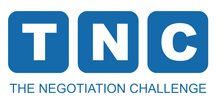Negotiation tactics are specific strategies or techniques used by negotiators to influence or gain an advantage during the negotiation process. These tactics aim to achieve better outcomes, create leverage, or navigate challenging situations. While some negotiation tactics may be considered ethical and constructive, others can be manipulative or deceptive. Here is a list of negotiation tactics:
- Anchoring: Starting the negotiation with an extreme or ambitious offer to set the reference point for further discussions.
- Mirroring: Subtly imitating the body language, tone, or speech pattern of the other party to build rapport and establish a connection.
- Flattery: Complimenting the other party to make them feel valued and create a positive atmosphere.
- Nibbling: Requesting small additional concessions after the agreement is almost finalized to gain extra benefits.
- Good Cop/Bad Cop: One negotiator plays the “good cop,” being sympathetic and accommodating, while another plays the “bad cop,” being more aggressive and demanding.
- Time Pressure: Creating a sense of urgency or time constraint to prompt the other party to make quick decisions or concessions.
- Walk-Away Threats: Threatening to walk away from the negotiation if certain demands are not met to put pressure on the other party.
- Limited Authority: Blaming limited decision-making power to justify the inability to meet specific demands or make concessions.
- Strategic Silence: Using silence strategically to prompt the other party to fill the gaps or make concessions.
- Good Guy/Bad Guy: One negotiator acts as the tough or uncompromising negotiator, while the other portrays themselves as reasonable and willing to find solutions.
- Personal Attacks: Attacking the character or personality of the other party to weaken their position or credibility.
- Information Withholding: Deliberately keeping certain information or critical details from the other party to gain an advantage.
- The Red Herring: Introducing a distracting or irrelevant issue to divert attention from the central points of negotiation.
- Sweetener: Offering an additional concession or benefit at the last moment to encourage the other party to agree.
- Bait and Switch: Presenting an initial offer or proposal, and then changing it later to a less favorable option.
- Trial Balloons: Floating a hypothetical proposal to gauge the other party’s reaction without committing to it.
- Limited Time Offer: Presenting a special offer that is available only for a limited time to encourage a quick decision.
- Nibble and Freeze: Requesting a small additional concession and then freezing the negotiation to prevent further demands.
- Intimidation: Using aggressive tactics, threats, or displays of power to put pressure on the other party.
- Compromise Trap: Encouraging the other party to accept a suboptimal agreement by presenting it as a fair compromise.
It is essential to use negotiation tactics ethically and avoid tactics that may damage the negotiation process or harm the relationship with the other party. Effective negotiators focus on creating value, building rapport, and seeking win-win solutions that satisfy the interests of all parties involved.
